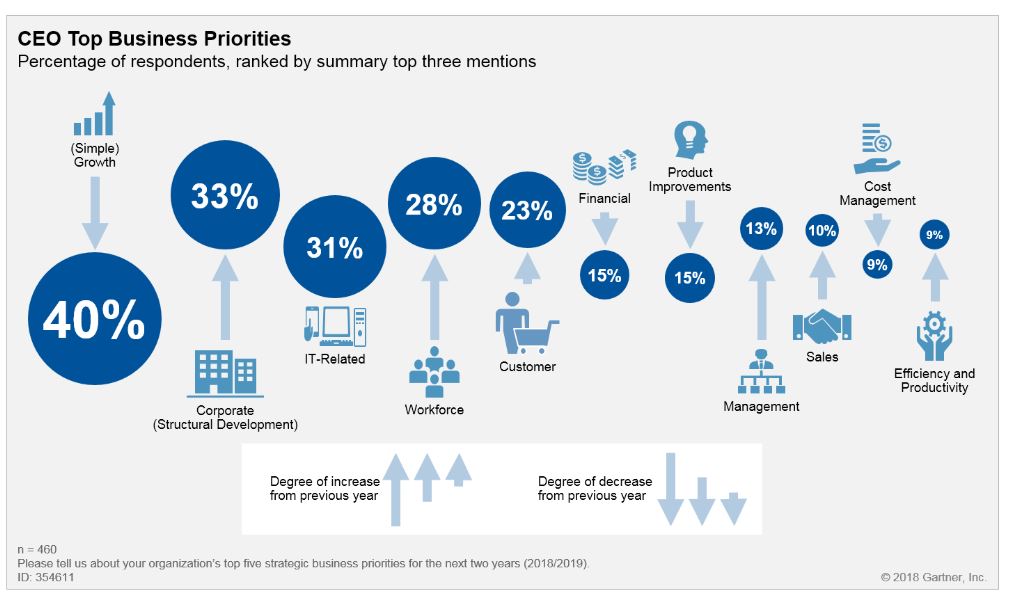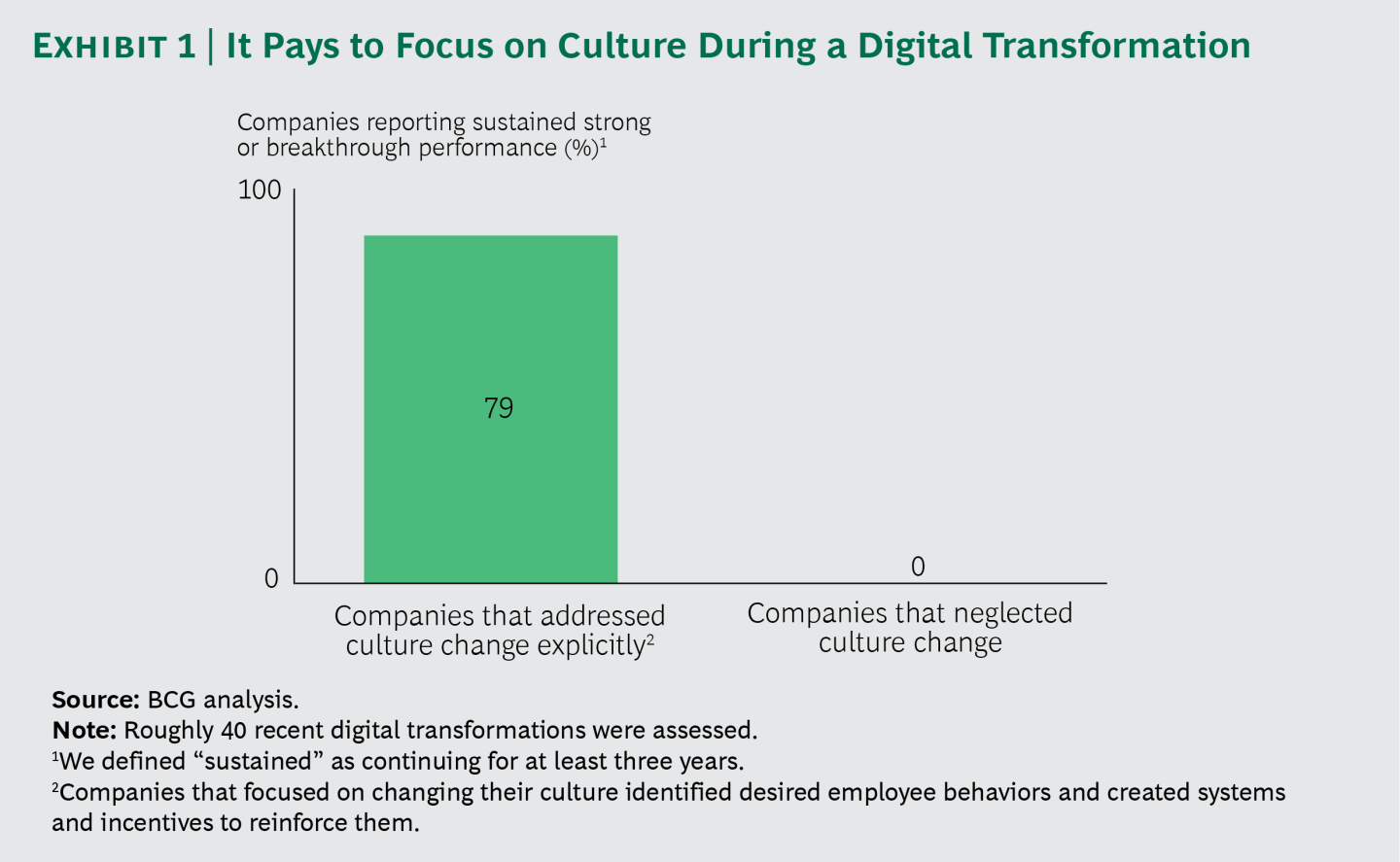A Strategy To Create A Thriving Digital Culture Through Digital Transformation
If you’re a business leader, it’s hard not to be taken in by the urgency of digital transformation. “Evolve or die.” “Hottest topic.”
“Essential for business growth.” “Don’t get left behind.” These are just some of the blaring headlines encouraging leaders to run, not walk,
headlong into digital transformation. But while digital transformation is a high priority for many companies – and it holds the promise of
meeting disruption head-on, improved customer experience, and a better selection of talent in a tough market – it’s not something to be done
without a clear vision and strategy.

If the words digital transformation catch your eye in every business publication and consultants and IT vendors are beating down your door,
you’re not alone. 62% of executive leaders polled by Gartner this year have a major transformation initiative to make their business
“more digital.” If you haven’t yet joined the stampede to digital, or if you’re still sharpening your thinking on the topic, here are a few
things to think about:
Strategy: transformation first, digital second.
Digital transformation is partly about technology enablement, so many business leaders are tempted to turn to their IT organizations, who
surely have a wish list of programs and apps and upgrades they’d like their leaders to invest in. That technology-first approach runs the
risk of having companies end up with a lot of shiny new toys – but with key business problems remaining unsolved. Before convening your IT
team and asking them to roll up their sleeves, answer these questions:
But you still need a strategic IT partner.
Digital transformation isn’t for the faint of heart…or the faint of capability. Does your IT team have credibility within the organization?
Does it have the business acumen and understanding of the business to make the right recommendations and trade-offs? Does IT perform its core
capabilities sufficiently well to take on this additional hurdle? Is the team strategic, business minded, and well networked into the business?
Is the team sufficiently technology agnostic to make sound business decisions, while also having relationships, insights and a strong point of
view on IT tools and capabilities? If the answer is no, you may have to upgrade your IT talent, bring in a third party to fill in the gaps – or
both.
Culture eats strategy for breakfast, and technology for lunch.
Forrester describes digital culture
as “customer-obsessed, empathetic, agile, experimental, and collaborative.” How many companies have all of these attributes today? A company
entering into a digital transformation without ‘digital friendly’ culture and behaviors already in place
needs to make the right cultural shifts to get the most out of their investment – and that requires the commitment of leaders across the
company to making that shift. BCG looked at 40 digital transformations and found that 90% of companies making culture a priority reported
breakthroughs or improved financial performance, compared to only 17% of companies that didn’t.

Don’t get stovepiped by linear, functional thinking.
Turning digital transformation into a functional capability upgrade runs the risk of leaving large, cross-functional challenges unsolved. Many
of the best digital investments, from data and analytics tools to artificial intelligence to robotic process automation, can be used
thoughtfully across the enterprise. And, if you need to prioritize and stretch dollars, think about where the greatest pain points are, and
where technology can drive the greatest outcomes and performance improvements.
Are you ready to unleash your organization?
Technology offers great opportunity, but also new ways of working that you and your company need to welcome. For example, technology is great
for bringing the customer closer to the organization – but are you ready to empower your customer service reps to make customer-focused
decisions in real time? Are you willing to pull some of your most talented employees out of their functions to sit on agile, cross-functional
teams that drive digital enablement? Think about these things before you move forward, and consider tapping some of your leadership and
emerging talent to think and plan with you.
Where strategy, culture, organizational agility and technology meet – that’s where the magic happens.

Shari Chernack ( https://www.linkedin.com/in/sharichernack/)
Shari is a change and transformation leader, with experience advising and supporting organizations and executives in their efforts to
transform, lead change, engage employees, communicate effectively, upgrade their process and digital capability, and build agile organizations
with strong workplace cultures. She has held roles in Big 4 (Deloitte) and boutique / agency consulting firms, as well as in-house roles with
Dell, SAP and most recently a PE-owned Caterpillar spinoff.
Copyright 2026 by RM4Tech LLC. All Rights Reserved.